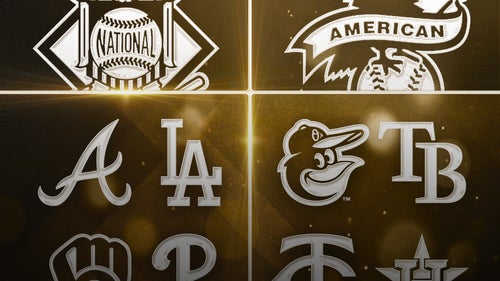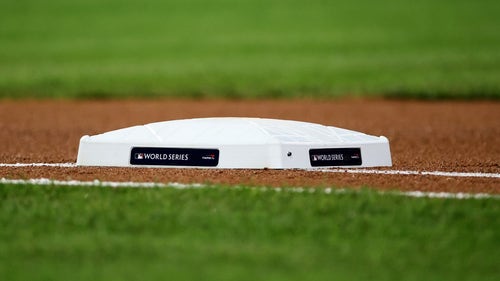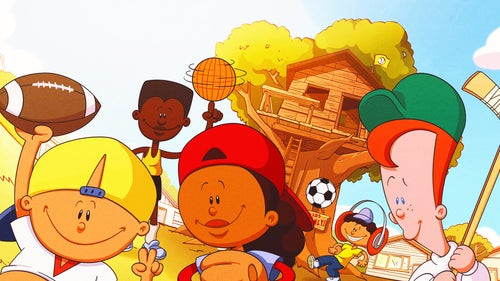
A brief history of All-Star voting
When it comes to innovations in the democratic process, the MLB All-Star Game compares favorably to any good suffragette or voting machine.
As has been the case for years, fans can vote at any major-league game beginning partway through the first half of the season. And more significantly, you're also allowed to fire up your browser and — if you have the time, inclination and pertinent neurosis — cast up to 25 online All-Star ballots. Yes, 25. The motivation, of course, traces back to MLB's lust for page views and ad sales, but that's another topic entirely. What it means for the fan is increased involvement (involvement to the point of absurdity, some might argue) and the latest step in a process that's evolved (and devolved) over time.
The first All-Star Game was back in 1933 at Comiskey Park, and it was the concoction of Chicago sportswriter Arch Ward, who saw the Century of Progress Exposition (now known as the World's Fair) as the perfect opportunity to grow a game battered in succession by World War I, the Black Sox Scandal and then the Great Depression. The highlight of the inaugural "Midsummer Classic" was a third-inning home run by 38-year-old Babe Ruth. Suffice it to say, Ward's idea took.
Early on the All-Star selection process was similar to what it is today — participants were chosen in part by the two managers and in part by the fans, who clipped ballots from Ward's paper, the Chicago Tribune, and mailed them in. That didn't last for long, though. From 1935 through 1946, the managers picked the entire All-Star rosters. In 1947, however, the fans regained a voice and were responsible for electing the eight starting position players, just as they are today. But then came the 1957 balloting.
That year, the fans in Cincinnati gave the foie gras treatment to the ballot boxes and elected seven of their beloved Reds to the starting lineup (Cardinals first baseman Stan Musial was the lone interloper). This raised first the eyebrow and then the hackles of commissioner Ford Frick. Frick responded by yanking Gus Bell and Wally Post from the lineup and replacing them with Hank Aaron and Willie Mays (well played, Mr. Frick). Then he defrocked the fans of their voting privileges and decreed that in the future the exact same number of ballots be distributed to each team.
So managers, coaches and players had exclusive control over the process until 1970. By that point, interest in the All-Star Game was on the wane for a variety of reasons. In an effort to reengage fans, then-commissioner Bowie Kuhn turned part of voting back over to the paying customers. Luckily for MLB, that 1970 contest was also a classic. In the ninth inning, the NL scored three runs off Catfish Hunter to tie the score, and then in the 12th Pete Rose bowled over catcher Ray Fosse to score the winning run for the senior circuit.
Of course, commissioner Frick's strict measures in '57 didn't entirely prevent ballot-box hijinx. In 1999, an enterprising David Lightman-type named Chris Nandor set up a program that in a matter of seconds cast more than 25,000 online votes for Red Sox players such as Nomar Garciaparra, Scott Hatteberg and Jose Offerman. MLB caught on, though, and threw out Nandor's evil-robot votes.
Anyhow, fast-forward to 2003, and the players themselves were re-enfranchised. After some grousing over the managers' tendency to fill the bench and pitching staff with their own players, MLB altered the process once again by giving players a larger say. And that's generally where we are today. Fans are still tasked with picking the starting lineup (nine players in the AL because of the designated hitter); players, managers and coaches vote in five starting pitchers, three relievers and a reserve at each position; and managers round out the roster by ensuring that every team is represented by at least one player (NL skippers also choose a DH). And then there's the recent contrivance that allows fans to cast the gravely important FINAL VOTE and select one last position player. For this year's game and beyond, that means a bloated roster of 34 players.
There's some justification for increased roster size because of the unusual pitcher usage that's necessarily part of the All-Star Game, but 34? That rule in tandem with the "every team gets a spot" mandate means that you're always going to have a player or three who have no business calling themselves All-Stars. Then again, merit doesn't always carry the day. Sometimes it's a non-entity enjoying a hot first half who makes it (see Jack Armstrong in 1990), sometimes it's an "All-Star emeritus" who gets the nod despite being hopelessly in decline (see, among others, Cal Ripken Jr. in 2001), and sometimes we get things like Jay Howell in 1987, who defy any sort of explanation.
In the end, it turns out that these kinds of things are largely popularity contests. And that makes All-Star balloting, through all the changes and revisions, no different from any other election in the free world.






